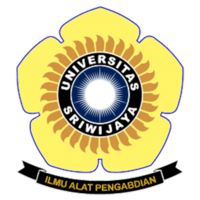The Effect of Providing People's Business Credit (Kur) on Increasing Field Rice
Abstract
Hasimin, M.A., Timisela, N. R., & Luhukay, J. M. (2024). The effect of providing people's business credit (KUR) on increasing field rice production. In: Herlinda S et al. (Eds.), Prosiding Seminar Nasional Lahan Suboptimal ke-12 Tahun 2024, Palembangg 21 Oktober 2024. (pp. 865–877). Palembang: Penerbit & Percetakan Universitas Sriwijaya (UNSRI).
People's Business Credit (KUR) for Agriculture is a financing/credit scheme without collateral for farmers whose businesses are considered feasible. The purpose of the study was to determine the effect of KUR provision on increasing rice field production. The study took place in Waimital Village, West Seram Regency. The number of research samples was 51 respondents who were KUR farmer participants. The results of a simple regression analysis of the effect of production on the provision of KUR show that the provision of KUR affects production with a t-count value of 2.870> t-table 2.015. This means that if the provision of KUR increases, the production of lowland rice will increase because production has a positive value. Farmers use KUR to meet their farming needs. The effectiveness of KUR use has an impact on the sustainability of lowland rice farming in Waimital Village because it is a village that has collaborated with the Maluku Province Bulog to buy farmers' harvests. The results of the study showed that the determination coefficient value was 0.746%, meaning that the variables of business duration (X1), land area (X2), number of seeds (X3), number of fertilizers (X4), number of pesticides (X5), labor (X6) and land ownership (D1) can explain rice field production by 74.6% while the rest is explained by other factors outside the model. The results of the F-count test of 22.02 > F-table 2.31 indicate that all X variables simultaneously affect the Y variable. The partial test results show that the variables X1, X2, X3, X4 and X6 affect production with a significance value> 0.05.
Keywords
Full Text:
PDFArticle Metrics
Abstract view : 100 timesPDF - 171 times
Refbacks
- There are currently no refbacks.

